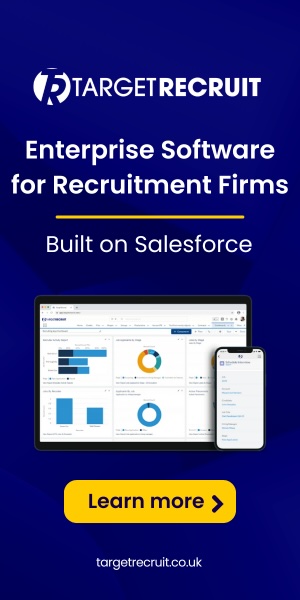The COVID-19 era, remote working, the Great Resignation – much has changed for businesses in recent years, forcing them to adapt to new markets, new ways of working and new job roles.
This change is set to become the new normal. According to the World Economic Forum, 85 million jobs are set to become obsolete by 2025, with millions of people needing to be retrained and upskilled to remain relevant in the workforce and for businesses to realise long-term strategies.
Little wonder then that skills development is a top concern for CEOs, with a 2019 PwC study finding that 79% of leaders regularly worry about their workforce’s existing skills and their ability to meet workplace needs.
Skills gaps are growing
Despite this long-term concern, the gap between the skills employees have and the skills business needs is actually widening. This is leading to huge challenges in recruitment, with organisations struggling to find the right talent and many roles going unfilled.
The knock-on effect of this is poor engagement and retention among existing employees, as staffing challenges and an inability to move with market trends leaves people demoralised, disengaged and unmotivated.
A recent survey of 600 HR professionals by publishing company Wiley found that 69% said their organisation was experiencing a skills gap, up from 55% in a similar study in 2021. Of those surveyed, half said that 10% of advertised job roles went unfilled and more than 40% said it took longer to find suitable candidates.
“The widening of the skills gap is concerning and not likely to end soon. The demand for skills keeps evolving faster and it’s increasingly hard for companies and higher education institutions to keep up, particularly when it comes to soft skills,” says Todd Zipper, executive vice president at Wiley.
The solution? Building your own talent base by hiring people based on their ability to develop and learn, and creating tech-enabled learning programmes that speed up skills development and tap into employees’ desires to develop new skills and grow.
“Employers would be wise to invest in employee learning and development initiatives, workforce training and flexible education benefits to deal with this burgeoning skills gap and boost retention,” agrees Zipper.
85 million jobs are set to become obsolete by 2025, with millions of people needing to be retrained and upskilled to remain relevant in the workforce and for businesses to realise long-term strategies.
A new approach to training
Creating effective learning and development interventions requires a new approach to employee development. Gone are the days of classroom-based training days where every employee sits through a day of presentations and speakers. Instead, modern-day learning programmes are tech-enabled, personalised to an individual’s learning style and involve a healthy dose of hands-on training.
Take computing giant IBM. Its home-grown learning platform – called Your Learning – uses digital artificial intelligence and analytics to examine the existing skillsets of its 300,000 plus employees, profiling their digital footprints and tailoring training to their individual needs. It then offers bespoke training recommendations to employees available online on through mobile – a ‘Netflix style approach to learning’, according to recently-retired CHRO Diane Gherson.
There is also a gamified element to IBM’s offering, with users collecting badges based on completed modules, which they are then encouraged to share.
This personalised approach taps into a key motivation for employees in a volatile job market – the ability to grow new skills.
Future talent wants to develop
According to a LinkedIn report into the future of learning, more than 90% of employees said they would stay at a company longer if it invested in learning, with nearly three-quarters (74%) wanting to take part in learning programmes during their spare time at work.
The trend is even more pronounced among Gen Z. More than three-quarters believe learning is the key to a successful career, with Gen Zers watching 50% more hours of online training courses than any other generation. Not only does the next generation of employees understand the importance of learning skills, but they also want to do it in an interactive, social, technology-enabled way. Meeting this demand is key to engaging and retaining your future workforce.
Some organisations are going even further when it comes to using technology to elevate learning. A 2022 PwC study found that 51% of companies are either in the process of integrating virtual reality into their learning strategy, or have already done so.
According to the report, the benefits of virtual reality training are clear, with learners being 4x faster to train, 3.75x more emotionally connected to the content they learn, and an incredible 275% more confident in applying post-training skills in their jobs.
More than 90% of employees said they would stay at a company longer if it invested in learning, with nearly three-quarters (74%) wanting to take part in learning programmes during their spare time at work.
Retail giant Walmart is one business that has implemented virtual reality training into its learning programmes. It uses VR to explore scenarios employees might face as part of their day-to-day work, such as dealing with unhappy customers, preparing for major events like Black Friday sales, and to measure skills for future managerial roles.
Speaking in an interview with SHRM, former Walmart VP of learning Andy Trainor extolled the virtues of VR, saying “virtual reality allows you to artificially create scenarios that you can’t recreate on the sales floor in a way that associates can learn in a safe environment”.
Modern day learning and development is about so much more than providing employees with the latest updates on how to do their jobs. Instead, it’s about creating an ongoing learning culture that develops new skills and capabilities in your people. It’s about providing them with the tools to succeed in an ever-evolving workplace, while also giving your organisation the flexibility to build internal skills at a time of skills shortages and shallow talent pools.
The organisations that understand that learning is as much a part of daily working life as meetings and management will be the ones that succeed in the future. As Microsoft CEO Satya Nadella says: “Always keep learning. You stop doing useful things if you don’t learn”.












